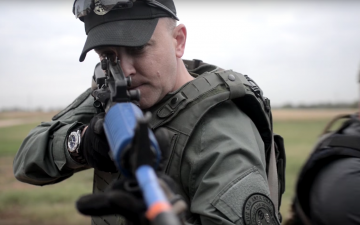Since the Columbine school shooting in 1999 the annual number of mass murder incidents in the U.S. has tripled. As attacks have become more frequent, and more deadly, emergency services have been scrambling to adapt. With gun rights and access to mental healthcare caught in a political stalemate, agencies have been evolving their response strategies, honing training, and buying equipment.
A growing number of Texas and South Dakota teachers are encouraged to carry firearms in the classroom as protection against active shooters, and signs on school fences warn of armed staff. Some prospective parents and those new to school districts mention that armed teacher programs were a draw for them when choosing location. Corporate offices are following suit, increasingly inviting trainers into the workplace to offer advice on defense procedure.
Retired police, private gun companies, and large purpose-built organizations like ALERRT (Advanced Law Enforcement Rapid Response Training), who are sponsored by the FBI, are gathering data on fresh attacks, providing analysis, and redirecting course development. They teach a range of students—police, EMS, fire, and civilians, who listen to talks by attack survivors, participate in live-fire collaborative training and medical drills that use pig organs as substitutes for human casualties, and practice response strategies in simulated cities.
Together they’re developing new methods of interdisciplinary collaboration, and learning a common methodology for attack response.


